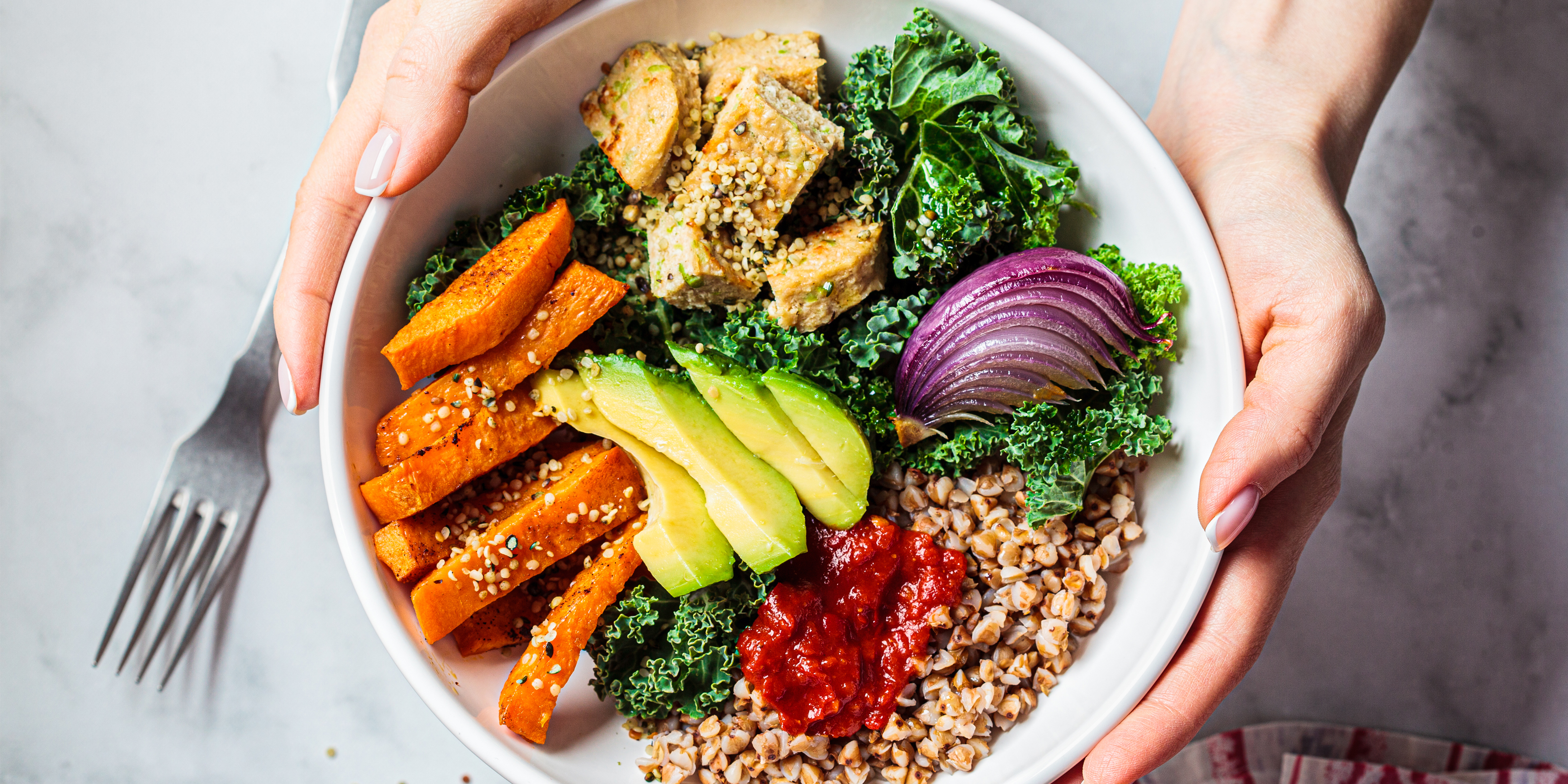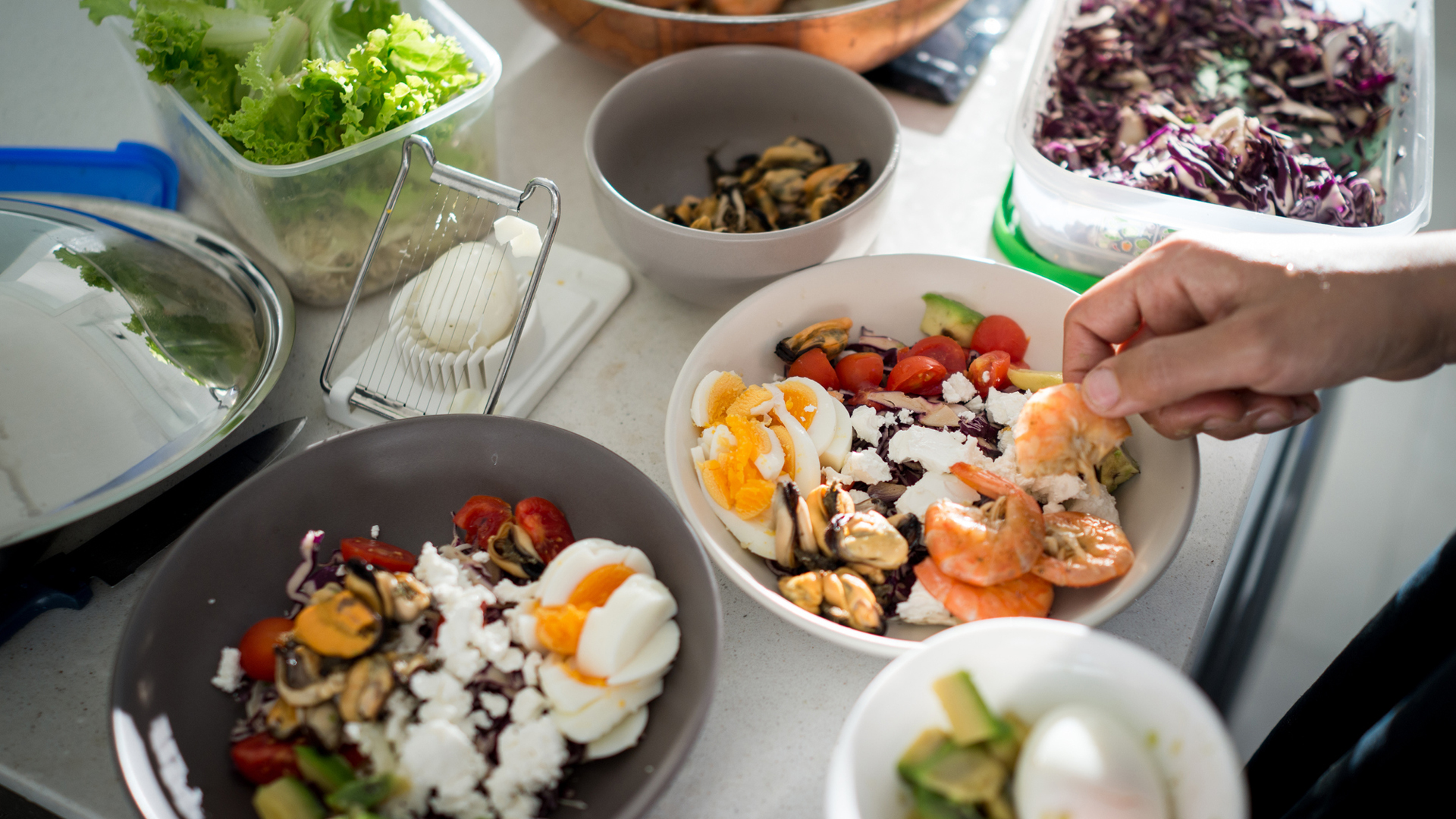Paleo diet vs keto: The difference explained
When it comes to the paleo diet vs keto, there are some key differences. Here’s how they both work, so you can decide if either is right for you

When it comes to the paleo diet vs keto, which one is best? It’s an understatement to say that the popularity of these diets has skyrocketed in recent years. Many people are enticed by their claims of impressive health benefits and want to try them out. But, it may be rather difficult to decide which one of these approaches may be more beneficial for your health.
At a glance, both the paleo diet and the keto diet seem fairly similar. Both diets claim to be more in tune with the human body’s needs than the classic Western diet. Both promise a quick and easy weight loss and better health outcomes. However, a closer look reveals several important differences that you may need to take into account before reaching a decision. Paleo and keto diets are not comparable when it comes to their nutritional value, flexibility or potential side effects.
In this article, we will explain their key principles as well as similarities and differences between paleo and keto to help you decide if either of these diets could be best for you.
What is a paleo diet?
The ‘paleo diet’ term was first used in 2002 by Dr Loren Cordain to describe a dietary pattern that reflects the habits and culinary practices of hunter-gatherers from the preagricultural Paleolithic era. It is also referred to as the ‘Stone Age diet’, ‘caveman diet’, or ‘primal diet’.
Although we don’t know much about what our ancestors actually ate on a daily basis, it’s assumed that their diet was largely based on lean meat, fish, seafood, fruits, vegetables, seeds and nuts. Foods such as cereals, grains, dairy products and refined oils were introduced much later and as such, they are not typically included in paleo diets.
According to a study published in the Science of The Total Environment, paleo diets tend to be low in carbohydrates (approx. 25% of total energy intake) and high in protein (approx. 30% of total energy intake), cholesterol and polyunsaturated fatty acids (approx. 15% of total energy intake). The diet quality score comes down to 260, which places the paleo diet well above the recommended value.

What is a keto diet?
It’s been shown that the keto diet helps prevent seizures, which is why it was first introduced as a treatment for epilepsy in the 1920s. As people who suffer from epilepsy seizures tend to respond well to fasting regimes, physicians wanted to find a way to mimic the metabolic effect of fasting without depriving their patients of food. This strategy was successfully used for nearly two decades, right until the antiepileptic drugs were introduced into medical practice. When nutritionists noticed that the ketogenic diet can produce rapid weight loss results, it quickly broke into the mainstream. Have a look at our guide to keto diet foods for our favorite keto-friendly foods.

Ketogenic diets are very high in dietary fats and extremely low in carbohydrates, making them similar to the Atkins diet. The difference is, when you’ve been on Atkins for a certain period of time, you are allowed to gradually introduce carbohydrates back into your meals. Whereas on a ketogenic diet, you keep the intake of carbohydrates low at all times. The purpose behind this approach is to achieve a state of ketosis - a metabolic condition in which the body turns to burning fat reserves instead of glucose. Ketosis is characterized by low insulin levels and high ketone levels. Ketones are compounds produced by the liver from fatty acids and used as fuel by muscles and other tissues.
From a nutritional standpoint, ketogenic diets contain approximately 75% of dietary fat, around 15-20% of protein, and up to 10% of carbohydrates. The amount of net carbohydrates (total carbohydrates minus dietary fiber) in a single food item should not exceed 25g. To achieve this, ketogenic diets are based largely on meat, fish, eggs, nuts, seeds, oils and oily foods as well as certain vegetables (such as low-carb leafy greens, onions or tomatoes). Fruit, grains, beans, legumes and root vegetables are not included.
Paleo diet vs keto: Similarities
Key principles
Paleo and keto diets share many key principles. They both highlight the importance of eating whole foods, while reducing the intake of highly processed foods, particularly those that contain high amounts of added sugars. They are also in agreement when it comes to avoiding several food groups. For example, both diets eliminate grains, beans and legumes. With paleo diets it’s because of the simple fact that grains and legumes were not present in early human diets. The keto diet excludes them due to their high carbohydrate content.
Both paleo and keto diets promote a high intake of dietary fat, ideally in the form of mono- and polyunsaturated fatty acids from sources such as olive oil, avocado, nuts, seeds and fish. Similarly, they both discourage the consumption of highly processed and trans fats due to their harmful impact on cardiovascular health.
Health benefits
Paleo and keto diets may have a fairly comparable impact on our health and body composition. A study published in Nutrients revealed that the keto diet can cause rapid weight loss and contribute to a reduced risk of developing type 2 diabetes, cardiovascular disease and several types of cancer. It may also have a beneficial effect on gut health and appetite control.
Similarly, many studies, including one published in Advances in Nutrition, have indicated that the paleo diet may significantly reduce body weight and waist circumference, whilst improving blood pressure, lipid profile and systemic inflammation.
Moreover, emerging evidence published in Psychiatry Research suggests that both of these diets may have a positive effect on our mood and mental health, though more rigorous research is needed to confirm these findings.
- Related: 7-day keto diet plan
- Related: 5-day paleo diet meal plan
Paleo diet vs keto: Differences
One of the biggest differences between paleo and keto diets is the ideology - or lack thereof. The keto diet is entirely about changing your dietary habits, whereas the paleo diet is considered more of a lifestyle. Paleo diet fans heavily promote engaging in HIIT (high intensity interval training), yoga, meditation and mindfulness.
Furthermore, there are some significant differences in relation to dietary components. While the keto explicitly restricts carbohydrates, paleo allows them, as long as they come from wholefood sources. Keto encourages eating many dairy foods, such as full-fat milk, butter and natural yogurts. Since they were not present during the paleolithic era, you will not find them in any paleo guidelines. In addition, consumption of soy foods like tofu, tempeh and soybeans is supported on the keto diet. In contrast, paleo doesn’t allow for any soy as they fall into the legume category.

Health risks
Following a keto diet may have certain benefits, but it also involves a degree of risk. Over the years, many questions have been raised about its safety and long-term effects. For example, an article published by Harvard Medical School suggests that keto’s high fat content may contribute to an increased risk of developing heart conditions, liver problems and kidney stones, particularly in individuals with certain genetic predispositions. Also, the low fiber content may trigger digestive issues.
Furthermore, many have reported that the keto diet causes temporary flu-like symptoms, which resulted in the now popular phrase the ‘keto flu’ being coined. These symptoms can include headaches, fatigue, nausea, dizziness, ‘brain fog’, gastrointestinal discomfort, decreased energy, feeling faint and heartbeat alterations. If you suffer from low blood pressure, keto may not be a good choice for you.
Following a paleo diet may also carry certain risks. As it excludes many food groups, it could contribute to certain micronutrient deficiencies. Calcium and vitamin D in particular, which are critical to bone health, may be in short supply.
Paleo diet vs keto: Which is best?
There are pros and cons to both the paleo and keto diet. If you don’t suffer from any chronic conditions, the final verdict may come down to issues of cost, maintenance and flexibility. The paleo diet offers more food choices, but it can also be quite expensive. At the same time, keto is way more restrictive and may be difficult to maintain in social situations. On the whole, paleo may be a slightly safer, healthier and more flexible choice of diet.
References
Arab, A., Mehrabani, S., Moradi, S., & Amani, R. (2019). The association between diet and mood: A systematic review of current literature. Psychiatry Research, 271, 428–437. https://doi.org/10.1016/j.psychres.2018.12.014
Cambeses-Franco, C., González-García, S., Feijoo, G., & Moreira, M. T. (2021). Is the Paleo diet safe for health and the environment? Science of The Total Environment, 781, 146717. https://doi.org/10.1016/j.scitotenv.2021.146717
Dowis, K., & Banga, S. (2021). The Potential Health Benefits of the Ketogenic Diet: A Narrative Review. Nutrients, 13(5), 1654. https://doi.org/10.3390/nu13051654
Ghaedi, E., Mohammadi, M., Mohammadi, H., Ramezani-Jolfaie, N., Malekzadeh, J., Hosseinzadeh, M., & Salehi-Abargouei, A. (2019). Effects of a Paleolithic Diet on Cardiovascular Disease Risk Factors: A Systematic Review and Meta-Analysis of Randomized Controlled Trials. Advances in Nutrition, 10(4), 634–646. https://doi.org/10.1093/advances/nmz007
Harvard Health. (2020, August 31). Should you try the keto diet? Retrieved April 22, 2022, from https://www.health.harvard.edu/staying-healthy/should-you-try-the-keto-diet
Sign up for the Live Science daily newsletter now
Get the world’s most fascinating discoveries delivered straight to your inbox.

Anna Gora is a health writer at Live Science, having previously worked across Coach, Fit&Well, T3, TechRadar and Tom's Guide. She is a certified personal trainer, nutritionist and health coach with nearly 10 years of professional experience. Anna holds a Bachelor's degree in Nutrition from the Warsaw University of Life Sciences, a Master’s degree in Nutrition, Physical Activity & Public Health from the University of Bristol, as well as various health coaching certificates. She is passionate about empowering people to live a healthy lifestyle and promoting the benefits of a plant-based diet.










